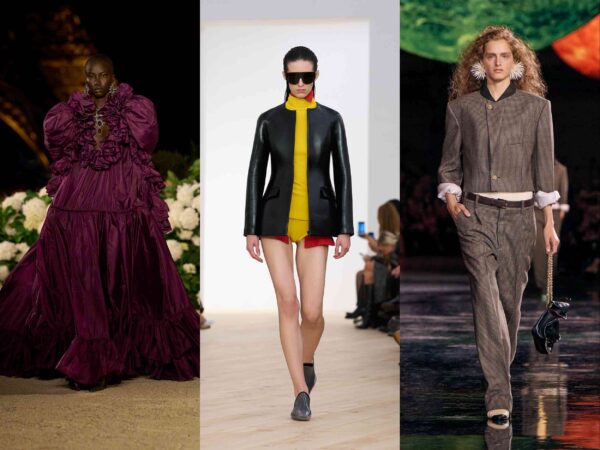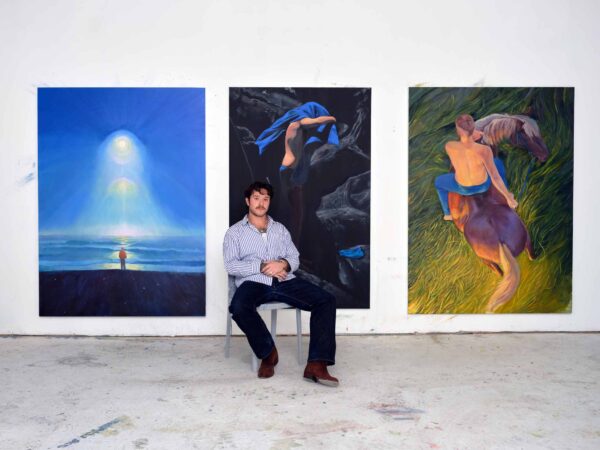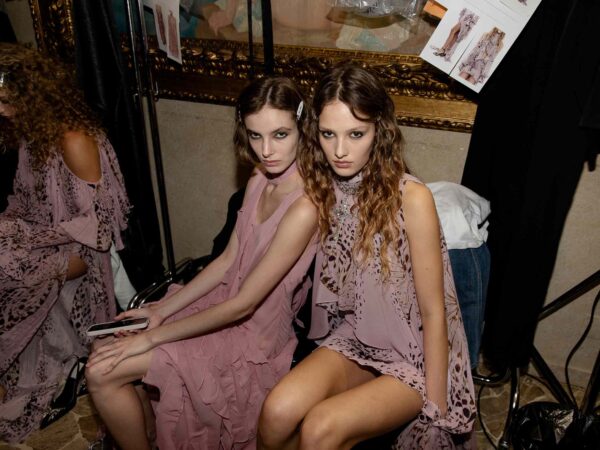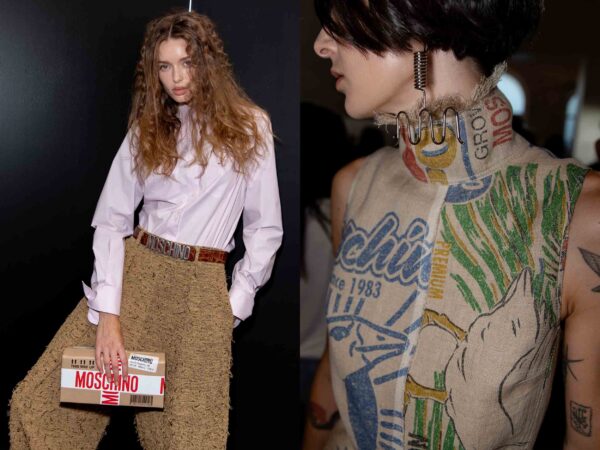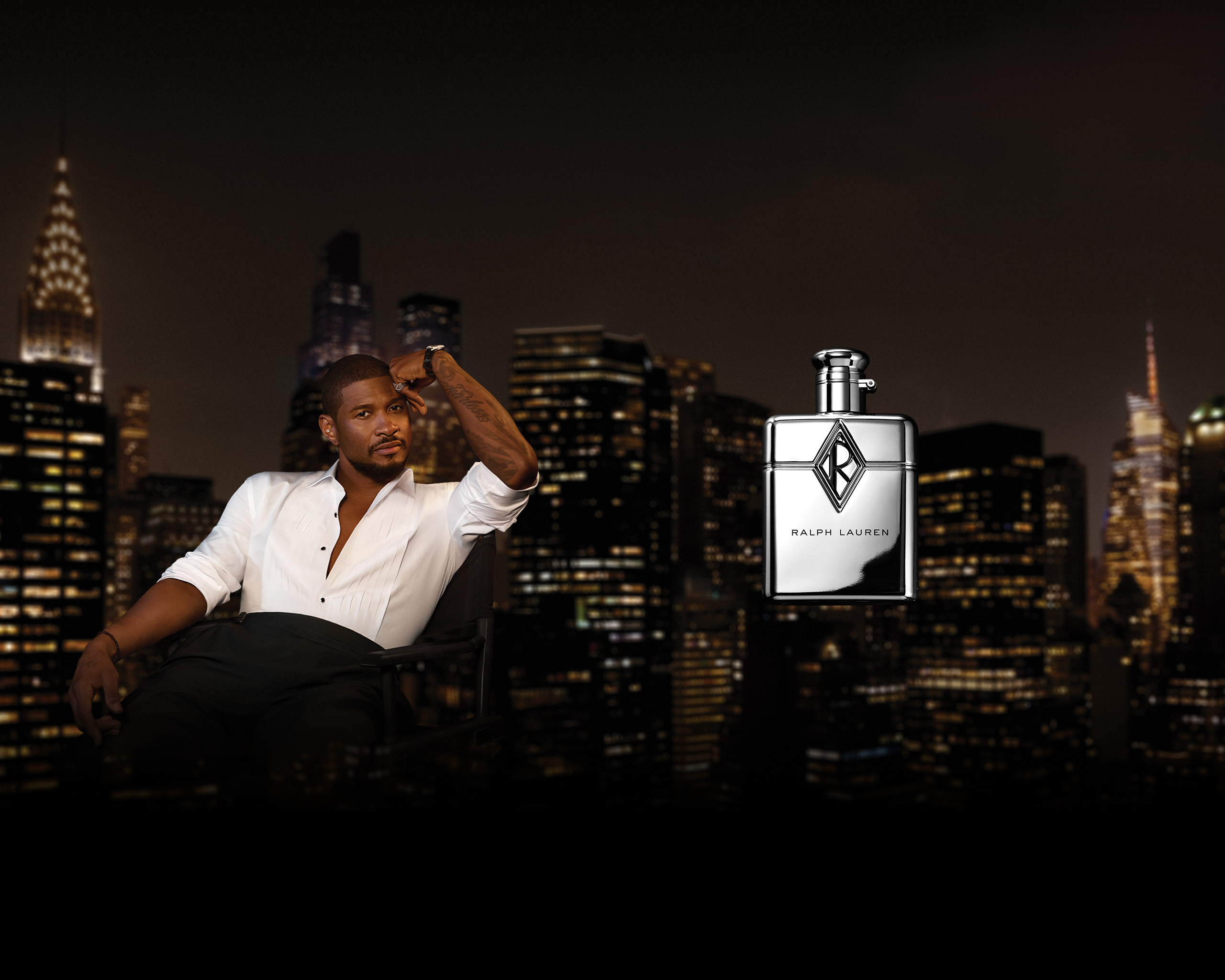Document joins playwright and director Georgica Pettus and producer Ashby Bland to discuss the art of numbers, spending money, and language systems
This interview cost six dollars. Five dollars and 90 cents, to be exact: $2.90 for subway fare and $3.00 for a yellow Gatorade purchased on a whim due to the unbelievable humidity in Brooklyn on this particular Wednesday. The environmental factors behind the cost of this journey are the fodder for 4,000 Dollars (or 4KD), a play written and directed by artist Georgica Pettus and produced by writer Ashby Bland on view at Gowanus gallery Kaje.
For heroine Mary-Louise, a professional code encrypter/decrypter played by Pettus, tallying things like doctor’s visits, impromptu beverages, and train tickets become tortuous mental gymnastics as she, somehow, spends just over $4,000 in a single day, leaving her account overdrawn by $81.68. The story unfolds in an on-stage boxing ring replete with a ring girl (played by painter Amanda Ba) who taunts Mary-Louise with a glowing LED sign displaying her ever-decreasing funds. From a deposit on a “dream apartment”—Mary-Louise ironically refers to her new dwelling as such because “it’s what I’ve got”—to seven-dollar matcha lattes and eight-dollar Clorox wipes, the hits to her dwindling bank account send her into a psychological duel between herself and the money she’s losing. The self-centeredness of Mary-Louise’s destitution bleeds through in the casting choices: All male and female characters—save for the ring girl—are played by artists Bennett Smith and Bella Carlos, because when you’re down that bad, it’s hard to distinguish your barista and gynecologist from another person riding next to you on the subway, just another man or woman who you might have to pay. Mary-Louise’s inner monologues manifest in complex outer dialogue that guides her through the boxing ring that is 4KD’s New York City, an original score by Emmett Mathison symbolizing her tragic journey as well as the failure of her number systems.
Over a ginger ale, a lemonade, and one hot tea with lemon (costs unknown plus the six dollars from earlier), Document enters the ring with Pettus and Bland to discuss the common absurdity of life in New York, language systems, and the art of numbers in 4,000 Dollars’ final weekend of performances.
Maya Kotomori: Tell me about the $4,000. Is this actually something that happened to you or is this an idea of a girl that you invented?
Georgica Pettus: It’s more the former, but very much like a dramatized version of what happened to me. The play is based on a single day in which I spent $4,000, and it was a terrible time in my life.
Maya: What was going on?
Georgica: I put a deposit down on an apartment that I had not seen. It was summer of last year, around July, and I was just feeling really bad in general. It wasn’t over the course of the day, but it was over the course of a week—I had a really unfortunate doctor’s appointment, but many things that happen in the play didn’t really happen to me. I was also reading [playwright and screenwriter] Suzan-Lori Parks for the first time, and I was really inspired, and then I was really depressed. So I just started writing because spending $4,000, I was like, Oh, this is just ridiculous. Walking around New York, it is literally so fucking easy to spend thousands of dollars in a day.
Maya: There’s that one tweet that’s like ‘spending a day in Manhattan, gonna find a way to spend exactly $42 dollars.”’ You’re walking around and sweating then you’re like, Wait, I’m hungry.
Ashby Bland: Yes and for a night out? $150. That’s actually something Mary-Louise says in the play a lot, ‘I’m hungry again.’ She’s running all these errands and in between them she keeps buying things from the lunch counter.
Georgica: Dumb food, fast casual. $18 lunch.
Ashby: And you don’t want her to waste any more money either.
Georgica: So that’s how it started, very much the reality of being myself living in New York, and it being really inhospitable, particularly on this one day.
Maya: What does Mary-Louise have as a character that Georgica in real life doesn’t?
Georgica: She’s a caricature, she’s really the most annoying part of me, the most dramatic, the most cry baby, most victimized. She’s really self centered! The reason there are only two other actors in the play, even though there are 12 non-principal roles, is because she doesn’t even see them. A person is a person, they all might as well be the same. And I think that is actually real about living here. I don’t operate in my daily life like that, but at your worst, you see everyone and everything as just something where you have to spend money. Mary-Louise also speaks in a quick circular way, sometimes in riddles, somehow lyrical, and, I was thinking last night, very maximalist. She uses as many words as possible to say something very simple.
Maya: And she’s vague.
Ashby: Yes, which really informs her character because she is obsessed with counting numbers. It’s actually her job. She’s thinking in her mind about how much she’s spending, but she’s also going over these particular numbers again and again, which reflects a more exaggerated version of the logic in your life. You’re particular, and she’s exaggerated.
Georgica: The numbers are a big thing. That’s another part that’s art versus reality—her job is totally absurd and sounds made up, which is another thing I think about with creative people we know in New York. You’re always thinking, What does this person do to make money? I think I’m one of those people.
Maya: Well, I’ve always thought you make art, and that’s that. How do you make money?
Georgica: I’ve done a lot of freelance work for other artists, but also film production stuff. Truly random shit. That’s the thing; you can so often find yourself in a room with a bunch of people who are interesting looking and sounding and blah blah blah blah—but you’re always like, What is it that you actually do? Mary-Louise is definitely that but she actually has this absurd job. At the time when I was writing this, my art practice was making this system of encryption, where I was encoding poems into numbers. I made this program that changed lines of letters into numbers, basically. So I was making that into a more fun thing in my head, and it turned into Mary-Louise’s actual job. And it was kind of my job at the time; I was also working for an artist and making a small version of this program for him.
Ashby: Let’s go into that, the numbers and codes and formulas. That’s a big part of Mary-Louise.
Georgica: It’s a big part of my practice, but I think really 4,000 Dollars is, very simply, an interest in language.
“Absurdity is layered with complexity and movement and play that no one will see, but there are people, live, moving. That’s so close to real life, just dramatized.”
Maya: Well, that all of us know that spending a day in Manhattan means spending a certain amount of money, that expectation is a formula. And you’re systematizing that into an artwork that is also a performance. How did Ashby join the system, and what’s it been like working together?
Ashby: We decided that I’d be a producer at Walker’s with Bennett, who plays all six male characters in the play. We met at a gallery opening… Shout out Francis Irv Gallery, that’s how Georgica met Bennett actually. We had already worked on The Wrong Movie together, where she produced and I acted, so it was like our roles reversed. So it really all came together one night over fries and martinis.
Maya: Is this your first time producing a piece of experimental theater?
Ashby: It’s my first time producing anything, actually. I used to produce parties but this is the first full performance-based thing.
Maya: What have been the biggest moving parts for you?
Ashby: Figuring out how to allocate funds, but also learning how many small details you have to lock in on. Timeline was something that moved around a lot, both coordinating with everyone but also making sure that everyone feels supported. Basically anything that’s shitty or boring or tedious or difficult [in production], I feel like I needed to do on 4KD. And it’s so fun!
Maya: How would you say your producing style relates to your own art practice?
Ashby: I think that my art practice revolves less around particular mediums and more around concepts. I’ve been obsessed with ideas around play and the absurd, especially when it comes to language. I feel like you can play with language to convey an emotion that surpasses traditional language, and I think being obsessed with letters and words is similar to Mary-Louise’s fixation on numbers, and that there is a control element in how she talks. I feel like all language and numbers are a puzzle or a system, and I feel like she knows that and is dedicated to it. While my practice is mainly writing and as someone who is involved in performance and photography and sometimes sculpture, it all convenes around playing with language and seeing how far we can push it. There are definite parallels between Mary-Louise’s character and my own work.
Maya: It just clicked for me… 4KD is a systematized way of saying 4,000 Dollars.
Georgica: We talked about it a lot actually, 4KD is the shorthand because writing out 4,000 Dollars is annoying, but then it caught on on set and we all started calling it that.
I have to add something to what you were saying about the absurd, Ashby. I remember very vividly talking to you in Berlin about that movie I didn’t see with Zac Efron.
Maya: The Iron Claw or as in ‘accompanied by’?
Georgica: [Laughs] No no, the wrestling movie! We were talking about The Iron Claw and I hadn’t seen it, and the idea Ashby came to was that life is more absurd than anything you could write. That stuck in my head when I was thinking about theater versus film. I think theater is kind of the only place where you can be as absurd if not more than life. Theater is this very special place where people can go to unabashedly show their obsession for, or lust for drama and gossip. People love drama.
I realized the other day, because you can see everything in film, so when you’re watching a crazy absurdist movie it’s almost too much for the system, the mental system. With theater, you can’t see everything. Absurdity is layered with complexity and movement and play that no one will see, but there are people, live, moving. That’s so close to real life, just dramatized.
Ashby: Especially in The Iron Claw—he lost what, four brothers?
Maya: Yes, and the most tragic is the first brother who died when he was a little boy in a freak accident. It’s alluded to in the film but not in depth. And it’s tragic and absurd.
Ashby: And it was a true story.
Georgica: Maybe it should have been a play.
Maya: Speaking of wrestling, the journey through spending the $4,000 happens within a boxing ring you fabricated within the gallery. Tell me about that.
Georgica: Boxing has been a reference from day one. I don’t know why. Originally the play was set for a regular stage, but when I started writing I came up with this antagonist as a ring girl… Well, she’s not really an antagonist, she’s just a representation of the thing Mary-Louise is coming up against. I just pictured a hot-ass girl walking around telling me how much money I had in my bank account, and me hating her.
Ashby: She’s like your mobile banking app. But we like to say that she’s the economy.
Georgica: Yes, the ring girl is the account, but she also is the personal economy.
Ashby: And she’s thriving while Mary-Louise is suffering.
Georgica: The physical ring is something I was talking about with Jacques [Vidal] from Kaje, actually. We were talking about the gamified aspect of the play which the ring girl creates, and it just got in my head. Ashby and I had a session at the kitchen table, and I was like, ‘Okay, what if the play is physically in a boxing ring?’
Ashby: We were also talking about how the play is very woman versus environment but really woman versus herself, where the environment is the cost of living in New York City. Leaning into that, it helps the audience come to the point where they’re understanding that this is all Mary-Louise versus her mind, which is a boxing ring. She’s fighting against the cost of New York City, but she’s really fighting against herself in her own internal ring. With actually building one, I remember we talked about it but I didn’t think we’d be able to do it.
Georgica: Shout out to our fabricator Chelsea Scott. She built the boxing ring, and made that whole idea possible. The ring is enclosed too, the entire play happens inside of it. That’s her mental landscape, and it is an incredibly hostile environment.
Ashby: And I guess you could say that the hostility of her inside world matches the conditions of the outside world that she’s dealing with. She feels like she’s getting punched, because she’s taking so many hits mentally.
Georgica: It’s the idea that your inside world is your outside world.
Ashby: There’s this quote, I don’t know who said it or what the full bit is but it’s like, ‘If you feel like a monster is chasing you, then you’re in danger.’ So it’s a two-fold meaning for this character, and aesthetically, to go back to the art of this project, I think that helped us conceive of how things needed to look for this to not be just a play. And it’s staged in a gallery. Kaje is our intervention space.
Georgica: Yeah, we’re not doing it in a theater because ultimately 4KD is a play that is also an installation that goes live every 8pm over two weekends.
Maya: And every 8pm there definitely is someone in New York City who has spent $4,000 in a day and really didn’t want to.
Georgica: $4,000 or more.
Ashby: Or less, but it still hurts.
Purchase tickets for the final night of 4,000 Dollars on June 16 here.








